mytest
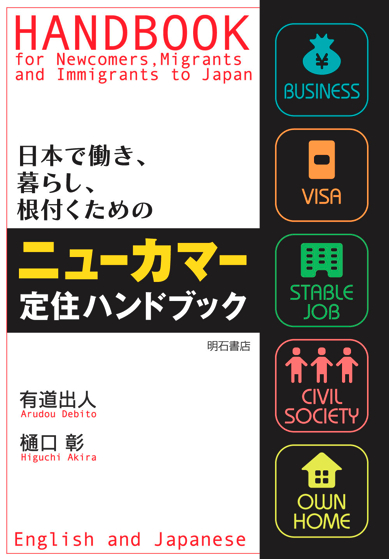
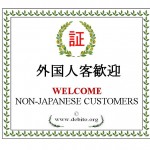

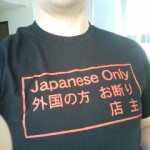

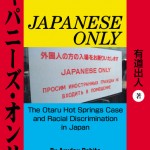
![]()

UPDATES ON TWITTER: arudoudebito
DEBITO.ORG PODCASTS on iTunes, subscribe free
Hi Blog. I gave two lectures a couple of weeks ago at Hokudai’s International Student Center on Japan’s multicultural future (a prognostication I find a bit weaker in recent years, what with the drop in NJ numbers in 2009 in all honesty, especially after the Nikkei Repatriation Bribe). So I went on a dig for the most recent GOJ stats on NJ residents, and think it appropriate for this weekend’s blog entry. Have a look:
Source: Ministry of Justice website, press release dated November 10, 2010
http://www.moj.go.jp/nyuukokukanri/kouhou/nyuukokukanri04_00005.html
COMMENT: As you can see, the numbers of NJ have increased without fail every year (for 48 years, as a matter of fact) until last year, now standing at nearly 2.2 million.
Source: Ministry of Justice website, press release dated November 10, 2010
http://www.moj.go.jp/nyuukokukanri/kouhou/nyuukokukanri04_00005.html
COMMENT: Here we have the number of resident NJ by nationality. As of 2007, the Chinese residents overtook the Koreans (North and South and Zainichi) for the first time in history, and are significantly more numerous than before. Their numbers are not abating, whereas the Koreans and Brazilians are going down significantly. Up also are people from The Philippines. Peruvians and Americans down slightly, while people from “sono ta” other countries are increasing their percentage of the population by a few fractions of a percent every year. Vietnamese, Thais, Subcontinental Indians, and Nepalese are the most significant gainers in this categories, growing by more than 10,000 souls over the past decade.
Source: Ministry of Justice website, press release dated November 10, 2010
http://www.moj.go.jp/content/000049973.pdf
COMMENT: Here we have NJ by Status of Residence (visa status). The red and white candy stripe area indicates Permanent Residents (both Regular (immigrant) and Special (Zainichi generational foreigners), who comprise more than 43% of all registered NJ in Japan. Nearly half (and growing, as you will see in the next graph) of all NJ here can stay here forever. Bubbling under are Spouse of Japanese (10.2%), Long-Term Residents (generally the Nikkei workers from South America, 10.1%), and Exchange Students (6.7%).
Source: Ministry of Justice website, press release dated November 10, 2010
http://www.moj.go.jp/content/000049973.pdf
COMMENT: Here we have registered NJ by Status of Residence again, showing us how the numbers have changed over time. Permanent Residents have increased significantly unabated, except that the Special PRs (Zainichis) keep dropping significantly, while the Regular (immigrants) keep increasing significantly both in number and percentage (8.4%) over 2009 (they crossed lines in 2007; there are now significantly more “Newcomer” immigrants than “Oldcomer” Zainichis). Meanwhile, the non-Permanents have dropped by nearly 5% over the past year. The largest drop percentages are the “Trainees” (generally Chinese working in factories, allegedly receiving training but often being used as slave laborers) by nearly a quarter, and the Long-Term Residents (Nikkei workers, again being offered bribes to go “home” and be somebody else’s unemployment statistic). Also significantly dropping are the “Entertainers” (often people working in the sex trades, again slavery except this time sexual), at 15.8% which to me is good news.
Source: Ministry of Justice website, press release dated November 10, 2010
http://www.moj.go.jp/nyuukokukanri/kouhou/nyuukokukanri04_00005.html
COMMENT: Here are the statistics on where NJ are being registered and the change over time. Tokyo area is the most popular, rising 3.1%. Second is Aichi (Nagoya), dropping significantly, then Osaka (also dropping slightly), Kanagawa (Yokohama) up a bit, and so on down. Outside of the major metropolises, NJ numbers are going down significantly (-4.0%).
One more, since this is fun. More raw numbers and rises and falls in the NJ population by prefecture:
Source: Ministry of Justice website, press release dated November 10, 2010
http://www.moj.go.jp/nyuukokukanri/kouhou/nyuukokukanri04_00005.html
Numbers in red indicate rises. Hey, Hokkaido rose! Arudou Debito



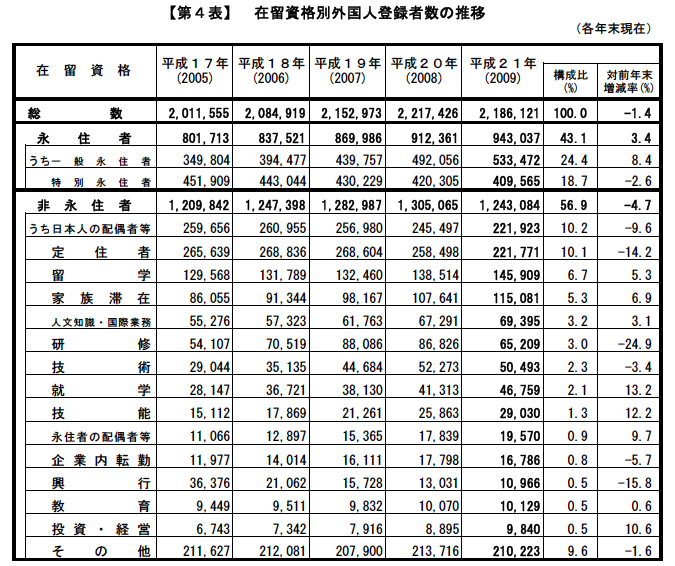


8 comments on “Latest numbers on Japan’s registered NJ population from MOJ (November 2010)”
On that last table, why are increases shown in red (danger, bad) while decreases are in black… 😉
Surely from a tax base point of view the opposite would be the case?
Nice to see Miyagi gained a net 409 foreign residents over the last year. It is a great place to live.
— I too noticed the choice of red (ALARM!) for increase.
Very interesting info and thanks for it.
One point regarding the red—really? Alarms? Log term residents know that red has many connotations in Japan and in fact most are positive.
— Not red ink. Try writing a letter in Japanese in red ink sometime and see how it’s received.
Yeah, dunno if I’d read too much into the colours: the Nikkei for example uses red to denote stocks that have risen and green for stocks that have fallen – exactly the opposite of almost everyone else in the whole wide world. No matter how many times I see this it still throws me every time. http://markets.nikkei.co.jp/
Sendaiben
All joking aside that is an incredibly valid point. I had to read it twice in order to process that the red mean’t increases and not decreases.
Just goes to show you what the government is really hoping for amidst all this immigration talk.
Not surprising that these figures mirror what is happening with the natives as well, i.e. falling rural populations, and an increase in the population of Tokyo and surrounds.
I might be over-thinking things but the top chart looked a bit misleading at first. The connected black dots, Japan’s population, are in units of millions listed on the right. The red bars are in units of ten-thousand, listed on the left. Combing two graphs might be common practice but it does seem to make the NJ presence bigger in Japan and any increases will look much larger at a quick glance.
Concern over the red font is misplaced and anyone drawing attention to its use as a sign of a specific agenda risks looking a little foolish. While you wouldn’t write a letter, or a name, in red in Japan, when it comes to data, red is frequently used to denote a positive quantity or increase.
Indeed, if you went into any commodity or securities trading house before paperless trading, you’d have found all the purchase order slips printed in red and the sell orders in blue or black. That used to cause more than a few errors when Japanese went to work in foreign companies, and vice versa, because it was typically the other way round in the West.
As photopying and faxing became prevalent, colour fonts didn’t show up on B&W copies so red font became less useful in some cases. Instead, to mark a loss or decreasing quantity, you might use a triangle mark before the number in question where we might expect a minus sign. The triangle “points up”, which can also cause confusion for Westerners unfamiliar with the practice, because they sometimes assume it must indicate the opposite.
Sendaiben, Debito,
The list was obviously put together by electricians / electrical engineers where red denotes positive. This is one reason it is always best to keep accountants away from your car or any electrical works (some things blow up when wired in reverse).
I know what you mean about writing in red in Japan though. Just this morning at the kuyaksho, the staff apologised to us for having written an address in red and offering us a red pen when they needed clarification on the kanji for a name.